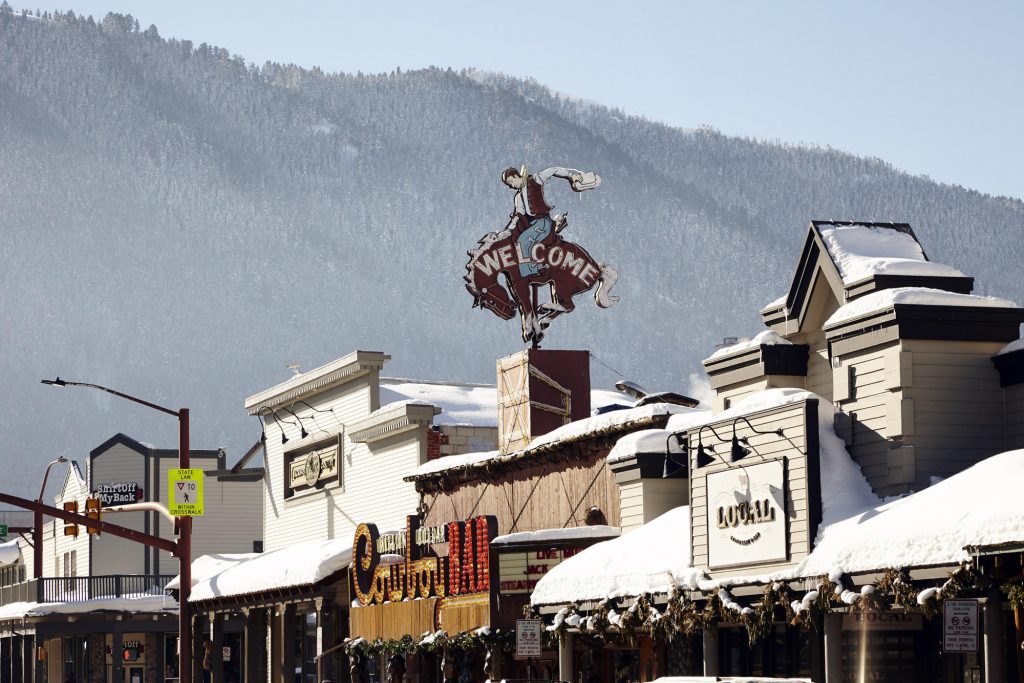Skift Take
Climate change is more than an existential threat to the outdoor ski economy. It will take a combination of greener operations and smarter business practices to ensure its viability for decades to come.
The ski industry has long epitomized luxury winter travel. Now it’s grappling with how to make money if there’s less snow.
As global warming cuts down the length of the traditional ski season, mountain hotel and resort operators need to more efficiently make their own snow. They also need to shift their business models to attract new customers — many of whom are millennials with an environmental bent — and get them coming year-round.
How bad is it getting? In the Alps, the ski season has shrunk in recent years from 150 days to just 120, with some fearing it could further fall below 100, according to France Inter.
The Rocky Mountains face the same problem. Resorts are investing heavily in snow-making machinery — and ones they hope will please green-conscious customers.
Vail Resorts, in the last two years has installed more than 400 new “low-energy” snow guns to blanket the trails across its 37 resorts. This includes Keystone Ski Resort, which has adopted an automated, energy-efficient system that needs less time and energy to make more snow than before. That’s helped it open the slopes in mid-October, its earliest start in 20 years, said Marjory Elwell, corporate communications manager at Vail Resorts.
In France, Val Thorens is now operating slope-grooming machines with cleaner-burning fuel. It’s also using electric-powered shuttles and funding initiatives aimed at, among other things, getting people to wax their skis in a greener way. Meanwhile, it’s dodged the worst effects of climate change.
“We are open from November 23 to May 3, which represents the longest winter season in Europe,” said Alix Ostyn, international press coordinator for Val Thorens. “We used to open mid-November, so we only lost one week in all those years.”
High Design, Easier Access
While these investments are probably enough to keep wealthy travelers and hard-core skiers happy, operators need to appeal to a wider — and often younger — set of travelers.
Take Anvil Hotel and Cache House in Jackson Hole, Wyoming, which are targeting price-conscious, experience-hungry people. The idea is that there’s a gap in the ski hospitality offerings for the sort of affordable yet curated hotels that are increasingly popular in cities. Anvil, a renovated 1950s motel in downtown Jackson Hole, has a lobby featuring a café and retail shop. Its sister property, Cache House, has a more hostel-like vibe, with two shared-living spaces with 50 bunks and a large communal space. While this design might seem to appeal only to ski bums, it’s actually attracted plenty of 70-year-old guests, underscoring the demand for cheaper lodging.
What’s more, the properties are positioning themselves as year-round destinations, an increasingly important pitch.
“Climate change is creating less snow, which creates less ski-able days and less ski-able places,” said Erik Warner, who owns the hotels through his hospitality group, Eagle Point Hotel Partners. He designed them with Brooklyn-based firm Studio Tack.
Shift to Subscription Model?
But is it enough? Recently, The New York Times asked if the ski industry could do more in an article titled Why Can’t Rich People Save Winter.
The picture need not be so gloomy. Three of the industry’s largest trade groups — Boulder’s Outdoor Industry Association, SnowSports Industries America, and the National Ski Areas Association — came together last year to create the Outdoor Business Climate Partnership. The consortium encourages skiers to embrace more sustainable practices and encourage policies that reduce greenhouse gas emissions and boost renewable energy.
Others are dreaming up new business models — including the possibility of a subscription or members-based ski industry. The idea fits with Skift’s 2020 Megatrends forecast, which identifies subscription travel as the next frontier of loyalty.
Vail’s Epic Pass, for one, offers access to 37 resorts. That lets customers choose the best conditions for their individual goals. As ski resorts adapt to more unpredictable — and often warmer — weather, offering such a range of opportunities throughout the year and across locations may become necessary. And it’ll be worth it, too, if it enables the ski industry to ensure the winter luxury experience that resorts have offered travelers for more than 100 years.
The Daily Newsletter
Our daily coverage of the global travel industry. Written by editors and analysts from across Skift’s brands.
Have a confidential tip for Skift? Get in touch
Tags: climate change, luxury, millennials, outdoors, ski, wellness
Photo credit: The Cache House in downtown Jackson Hole, Wyoming, is crafting a new ski experience for millennials. Mikael Kennedy / Cache House
